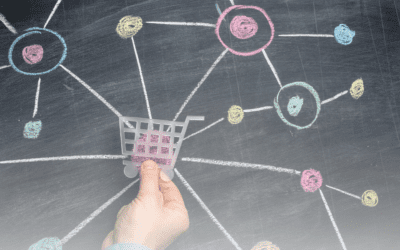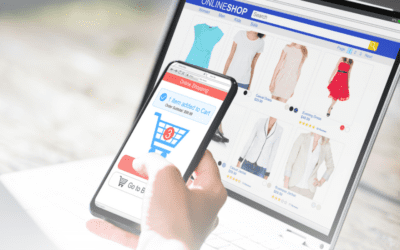In the evolving digital landscape, nonprofits face the dual challenge of capturing attention and converting that attention into support, donations, and active engagement. Digital marketing for nonprofits is a multifaceted endeavor that encompasses a range of strategies from social media engagement and email marketing to leveraging the power of data-driven advertising and automation tools.
What Is Digital Marketing For Nonprofits
Digital marketing for nonprofits is a strategic approach leveraging online platforms to promote a cause, engage with audiences, and drive support. It encompasses utilizing social media, email campaigns, content creation, and search engine optimization to spread awareness, encourage donations, and foster community engagement. This approach allows nonprofits to reach a wider audience with lower costs compared to traditional marketing methods, providing opportunities for personalized engagement and real-time feedback from supporters.
How to Start a Digital Marketing Strategy for Nonprofits
Step 1: Establishing Clear Goals
Before embarking on any digital marketing endeavor, it’s imperative for nonprofits to clearly define their marketing goals. These goals should be SMART: Specific, Measurable, Attainable, Relevant, and Time-based. Whether it’s increasing the size of an email list to acquire more donors or boosting social media engagement, setting concrete goals is the first step in a successful digital marketing strategy.
Step 2: Understanding and Segmenting Your Audience
A one-size-fits-all approach doesn’t work in digital marketing. Nonprofits must segment their audience based on various criteria, such as donation history, event attendance, and engagement level, to tailor their messages for maximum impact. This segmentation allows for more personalized and effective communication.
Step 3: Email Marketing and Automation
Email remains a cornerstone of nonprofit digital marketing. Utilizing email automation can help nonprofits stay in touch with their supporters through timely and relevant messages triggered by specific actions, like newsletter signups or event registrations. This strategy not only saves time but also enhances the engagement of supporters.
Step 4: Leveraging Digital Advertisements
Digital ads, especially retargeted ads, can be highly effective in reminding potential donors about their interest in your cause. These ads can be tailored to appear to users based on their previous interactions with your nonprofit’s website or social media pages, thereby increasing the likelihood of donations or engagement.
Step 5: Embracing Social Media
Social media platforms offer vast opportunities for nonprofits to share their stories, engage with their audience, and mobilize support. From Facebook to TikTok, utilizing a variety of content forms—posts, stories, videos—enables nonprofits to reach different segments of their audience in engaging ways.

Step 6: Monitoring and Adjusting Strategies
The digital marketing landscape is dynamic, necessitating ongoing monitoring of campaign performance across different platforms. Nonprofits should use key performance indicators (KPIs) like email open rates, social media engagement metrics, and ad conversion rates to gauge the success of their strategies and make necessary adjustments.
Marketing Strategies for Nonprofit Organizations
Marketing for nonprofit organizations encompasses a variety of strategies, each tailored to leverage different platforms and tools to maximize outreach, engagement, and ultimately, the support necessary for their causes. Let’s delve into the specifics of each strategy:
Email Marketing
Email marketing is one of the most cost-effective and impactful tools at a nonprofit’s disposal. It’s direct, personal, and allows for detailed storytelling and calls to action. To leverage email marketing effectively, nonprofits should focus on building a healthy email list, segmenting this list to personalize messages according to donor interests and behaviors, and designing emails that are engaging and mobile-friendly. Crafting compelling subject lines and making use of automation for welcome series, thank you messages, and regular updates can significantly enhance engagement rates.
Event Marketing
Events, whether virtual or in-person, are crucial for building community, raising funds, and increasing awareness about a nonprofit’s cause. Event marketing involves promoting these events through various channels to maximize attendance and engagement. Key strategies include creating a comprehensive event page on the website, utilizing social media for promotion and live updates, sending targeted emails to potential attendees, and leveraging partnerships for wider event visibility. The goal is to create a buzz around the event, making use of storytelling and the emotional aspect of the cause to draw in participants.
Video Marketing
Video content is incredibly engaging and shares a nonprofit’s message compellingly and memorably. Nonprofits can use video marketing to tell stories, showcase the impact of their work, and explain their mission and needs. These videos can be shared across various platforms, including social media, the organization’s website, and via email. The keys to effective video marketing include focusing on storytelling, keeping videos concise but impactful, and including clear calls to action. Videos can range from donor testimonials and success stories to behind-the-scenes looks at the nonprofit’s work.
Social Media
Social media platforms offer vast and varied audiences for nonprofits to engage with. Effective social media marketing involves more than just posting; it’s about creating a community around the nonprofit’s cause. Strategies include sharing a mix of content types (posts, stories, videos), engaging directly with followers through comments and messages, leveraging hashtags to increase visibility, and running targeted ad campaigns. Nonprofits should also consider influencer collaborations to reach new audiences and using live features to share real-time updates or events.
Website Optimization
A nonprofit’s website is often the first point of contact for many potential supporters, donors, and beneficiaries. Thus, it’s crucial to ensure the website is user-friendly, mobile-optimized, and clearly communicates the nonprofit’s mission, impact, and needs. Effective strategies include having a clear call to action on the homepage, showcasing impact stories, optimizing for search engines (SEO) to increase visibility, and ensuring the donation process is straightforward and secure. Regular content updates and blogs can also drive traffic and engagement.
Digital Marketing
Digital marketing for nonprofits encompasses all the strategies mentioned above and more, including search engine marketing (SEM), pay-per-click advertising (PPC), and retargeting campaigns. The overarching goal is to use digital channels to reach and engage with a wide audience online. This involves a combination of content creation, distribution across digital platforms, data analysis to understand and optimize performance, and ongoing experimentation to find the most effective strategies for the organization’s specific goals and audience.
5 Nonprofit Marketing Ideas

Promotional items and products offer a tangible way for nonprofits to increase awareness, encourage donations, and foster a sense of community among supporters. Here are five innovative ideas for using promotional items to market your nonprofit effectively:
1. Branded Merchandise for Fundraising
Selling branded merchandise such as t-shirts, hats, water bottles, or tote bags is a classic yet effective strategy. Not only does it serve as a direct fundraising tool, but it also turns supporters into walking billboards for your cause. Ensure that the items are of high quality and have a design that connects with your mission—this encourages purchases and usage. For instance, environmental nonprofits might sell merchandise made from sustainable materials to align with their mission.
2. Reward Donors with Custom Gifts
Offering custom promotional items as rewards for donations can motivate higher contributions. For example, you could offer a branded notebook or a personalized pen for donations over a certain amount. This not only acts as an incentive to give but also makes donors feel valued and appreciated, fostering long-term relationships.
3. Event Giveaways
Utilize promotional items as giveaways at events to leave a lasting impression on attendees. Choose items that are useful and relevant to the event’s theme, such as reusable water bottles for a sports event or eco-friendly seed packets for an environmental campaign. These items can carry your nonprofit’s logo and message, ensuring that the memory of the event and your cause stays with attendees long after the day.
4. Educational Kits for Schools and Communities
Create educational kits related to your nonprofit’s mission and distribute them in schools and communities. For example, a nonprofit focused on literacy could distribute book bags filled with educational materials, books, and branded bookmarks. This not only promotes your cause but also provides valuable resources to the community, enhancing your nonprofit’s reputation and reach.
5. Social Media Contests and Giveaways
Leverage the power of social media by organizing contests or giveaways that encourage participants to share your message for a chance to win promotional items. This strategy can significantly increase your visibility and engage a broader audience. Choose attractive items that resonate with your target audience and align with your cause, and make sure the contest encourages actions that spread awareness of your mission, such as sharing a post, tagging friends, or using a specific hashtag.
Incorporating promotional items into your nonprofit marketing strategy can significantly enhance your organization’s visibility and supporter engagement. By thoughtfully selecting items that resonate with your mission and audience, you can create meaningful connections and drive your nonprofit’s goals forward.
Key Takeaways
- Strategic Goal Setting: Establishing clear, SMART goals is fundamental for any digital marketing effort. Nonprofits must define what they aim to achieve, such as increasing donor engagement or growing their email lists, to guide their strategies effectively.
- Audience Segmentation and Personalization: Understanding and segmenting the target audience allows nonprofits to tailor their messaging for maximum impact. Personalized communication, based on factors like donation history and event attendance, enhances engagement and fosters deeper connections with supporters.
- Utilizing a Mix of Digital Channels: Effective digital marketing for nonprofits requires a blend of channels, including email, social media, and digital advertisements. Each channel serves a unique purpose, from direct engagement through emails to broad awareness through social media and targeted reach via digital ads.
- Content is King: High-quality, compelling content shared across various digital platforms, including videos, blog posts, and social media stories, is crucial. This content not only spreads awareness of the nonprofit’s cause but also educates, engages, and encourages the audience to take action.
- Continuous Monitoring and Adjustment: The digital landscape is ever-changing, necessitating ongoing monitoring of campaign performance and the flexibility to make adjustments. By analyzing key performance indicators (KPIs), nonprofits can refine their strategies to better meet their objectives and maximize impact.
Connect with Proforma Battlefield for Tailored Promotional Solutions
Whether you’re looking to elevate your brand presence or seeking innovative promotional products, Proforma Battlefield is your go-to partner. Our commitment to quality, creativity, and efficiency sets us apart in delivering customized solutions that resonate with your audience.
Interested in a bespoke promotional strategy? Contact us today to discover how we can help your brand shine.




